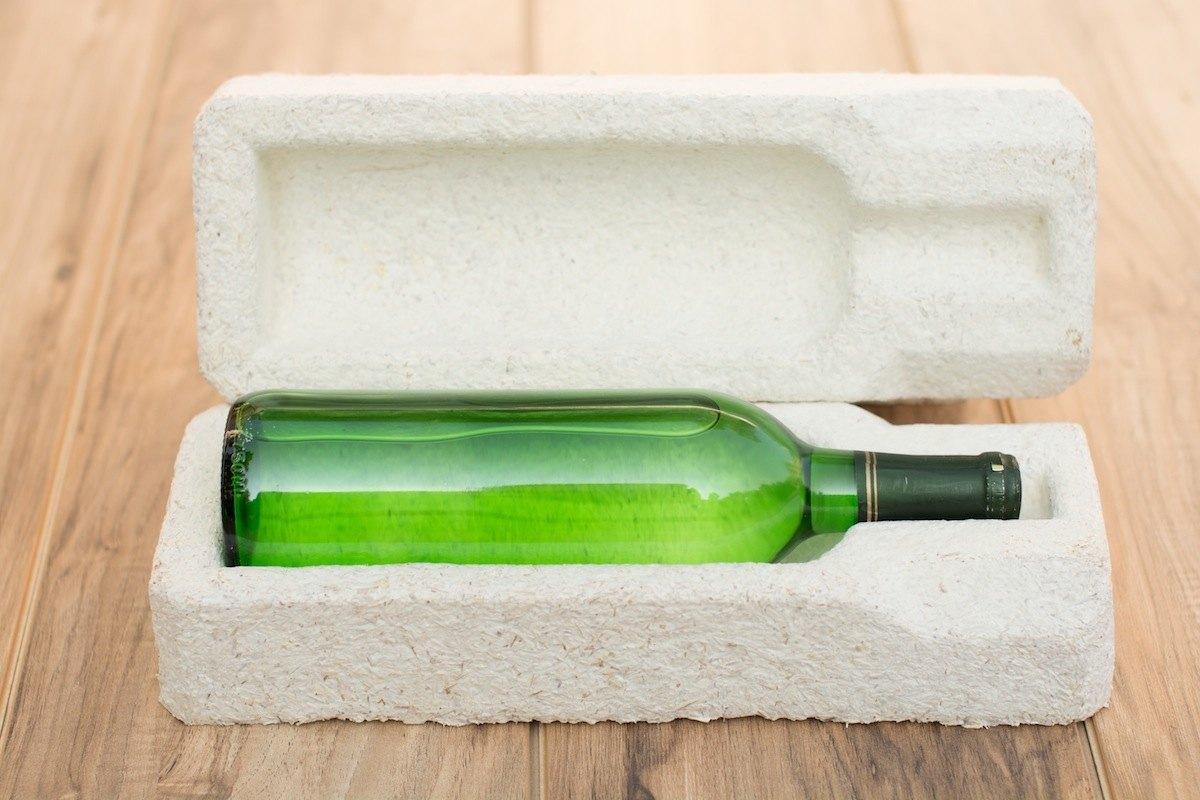
With a busy week behind you and the weekend within reach, there’s no shame in taking things a bit easy on Friday afternoon. With this in mind, every Friday TriplePundit will give you a fun, easy read on a topic you care about. So, take a break from those endless email threads and spend five minutes catching up on the latest trends in sustainability and business.
Containers and packaging account for 30 percent of the U.S. waste stream, according to the most recent EPA figures available. That amounts to 76 million tons annually, making packaging the single largest waste-item in America. The European Union also identifies packaging waste as a key area of concern, noting that its 28 member states generate around 79 million tons of packaging waste annually.
With a lifestyle that increasingly relies on convenience, we're unlikely to break off our love affair with packaging anytime soon. But some change-makers are taking a different approach by creating biodegradable alternatives made from fruit and vegetable waste. Check out these innovative ideas that cut down on both food waste and packaging -- talk about a win-win!
Mushrooms
When it comes to plant-based packaging, the mushroom is king -- at least for now. Dell introduced the concept of mushroom-based packaging to the world back in 2011 and began piloting the technology in its server shipments two years later. While the company admits it hit some roadblocks during the testing phase, it expects to be ready to reintroduce mushroom-based server cushioning this year.
Ikea is planning its own foray into mushroom-based packaging, and the material is now being produced by several packaging companies including Sealed Air and Ecovative Designs.
Potatoes
During processing, potatoes are blasted with water before being pushed through a tube fitted with a set of knives to cut wedges or chips. The byproduct is thousands of gallons of water laden with potato starch. Usually this water is processed and discharged, making waste of the potato leftovers, but a New Zealand-based firm devised another solution.
Appropriately named Potatopak, the company patented a technology that extracts potato starch from processing-plant wastewater for use in packaging. The water itself is also recovered and reused to make the company's namesake packaging, and all other waste from its manufacturing process is fed to livestock, fish or worms. The company plans to "expand to other countries and utilize their waste streams."
If the concept sounds familiar, you may be thinking of personal care brand Tom's of Maine and its own foray into potato-starch packaging. The company dappled with the idea of using a potato-based plastic resin in packaging such as mouthwash bottles, but it has since put the idea on the back burner.
Whey protein
Cartons can be tricky to recycle because paper is coated with layers of plastic film that must be separated before the materials can be recovered. A growing number of U.S. cities are beginning to accept cartons for recycling, but such technologies are often too pricey for recycling plants servicing smaller towns and rural areas. But a group of European researchers are out to make cartons easier to recycle through the use of bio-based materials.
Working in the EU-funded Bio-Board project, they developed a bio-based film that can be used to replace plastic in carton manufacturing. The film, made mostly from whey protein left over from cheese-making, is easier to separate from multilayer packaging, making the recycling of such packaging far more affordable.
“Bio-board responds to increasing demand from food packaging producers for biomaterials that can substitute synthetic coatings without compromising packaging properties for liquid and dry goods,” Elodie Bugnicourt, the project coordinator at IRIS in Spain, said in a statement. “Using extracts from whey and potato fruit juice we have developed materials that meet those requirements and evaluated their use in coated packaging production processes.”
Agricultural waste
Potato starch isn't the only agricultural byproduct being repurposed for packaging. Idaho-based BiologiQ, a longtime leader in biodegradable polylactic acid (PLA) plastic, is now making a resin it calls thermoplastic starch, or TPS.
Made from annually-renewable agricultural waste -- from crops like potatoes, corn and cassava, a woody shrub native to South America -- BiologiQ's TPS packaging is biodegradable and can be used in "a large range of consumer and industrial products," the company said.
The company, which has processing plants in Idaho, as well as Japan, Thailand and Indonesia, also launched another biodegradable product that's poised to revolutionize agriculture. Thin plastic films covering agricultural crops have been used for years to increase crop quality and yield, retain water, decrease harmful insects, and warm the soil for better seed germination and earlier planting. After use, this film is typically tossed in the trash, but BiologiQ developed a fully biodegradable alternative that can be returned to the earth after the growing season. How cool!
Edible food packaging
Would you chow down on food in edible packaging? Massachusetts-based Quantum Designs, the mastermind behind WikiFoods, is banking on it.
The company's innovative idea wraps foods and beverages in edible packages made of natural ingredients like fruit scraps, rendering the whole thing into a tasty treat.
The technology was first introduced to the open market in partnership with Stonyfield Organic in 2013, in the form of package-free frozen yogurt 'pearls.' Late last year, WikiFoods introduced non-allergenic, non-dairy frozen bits under the Incredible Innovations brand, now available in select New England locations.
Image credits: 1) and 2) Ecovative Designs 3) Bio-board 4) Stonyfield Organic

Mary has reported on sustainability and social impact for over a decade and now serves as executive editor of TriplePundit. She is also the general manager of TriplePundit's Brand Studio, which has worked with dozens of organizations on sustainability storytelling, and VP of content for TriplePundit's parent company 3BL.














